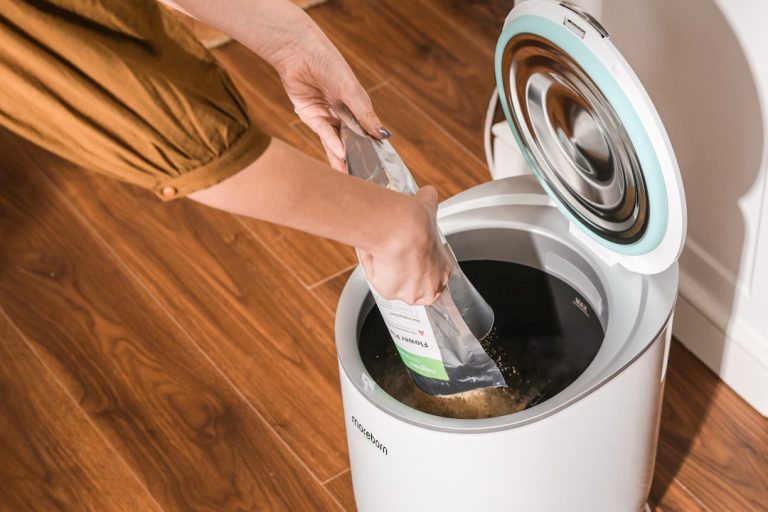My Guide to Sustainable Home Decor (stylish & Environmentally Conscious).
My Guide to Sustainable Home Decor (Stylish & Environmentally Conscious)
For years, I believed that creating a beautiful home meant a constant cycle of buying new, chasing trends, and sometimes, letting go of items that no longer “fit.” But as my awareness of our planet’s health grew, so did my desire to align my home with my values. I discovered that style doesn’t have to come at the Earth’s expense. In fact, some of the most stunning interiors are those crafted with intention, purpose, and a deep respect for natural resources.
This isn’t about sacrificing aesthetics for ethics; it’s about elevating both. It’s about making choices that tell a story, support communities, and reduce our environmental footprint, all while creating spaces that feel uniquely ‘us’ and look absolutely gorgeous. If you’re ready to transform your living spaces into havens of both beauty and responsibility, welcome to my personal guide to sustainable home decor.
Beyond the Buzzwords: Defining My Sustainable Decor Philosophy
When I first embarked on this journey, “sustainable decor” felt like a vast, sometimes overwhelming concept. Was it just about buying bamboo? Was I doomed to a beige, rustic aesthetic? What I quickly learned is that true sustainable home decor is a holistic approach, far more nuanced and exciting than I initially imagined. For me, it boils down to a few core principles:
- Mindful Consumption: Every purchase is an opportunity to support ethical practices, durable goods, and timeless design. It’s about asking, “Do I truly need this? Where did it come from? How long will it last?”
- Circular Thinking: Embracing the idea that items can have multiple lives. This means upcycling, repairing, donating, and choosing products designed for longevity or easy recycling.
- Connection to Nature: Bringing the outdoors in, not just with plants, but through natural materials, light, and patterns that soothe and inspire.
- Supporting Artisans & Fair Practices: Recognizing the human element behind our decor. Choosing items made by people paid fairly and working in safe conditions.
- Health & Well-being: Opting for non-toxic materials and finishes that contribute to a healthier indoor environment for my family.
This philosophy guides every choice I make, from a new sofa to a simple throw pillow. It’s about building a home that reflects my values, without ever compromising on the style I adore.
Crafting Beauty with Conscience: My Material Matters Checklist
The foundation of any stylish and sustainable home begins with the materials we choose. These aren’t just components; they’re the storytellers of our spaces. My “material matters checklist” ensures that every fabric, every piece of wood, and every finish contributes positively to both the aesthetic and the environment.
Embracing Nature’s Finest: Natural & Organic Fibers
When it comes to textiles – think sofas, curtains, rugs, bedding – moving away from synthetic, petroleum-based fabrics like polyester and nylon was a game-changer for me. Instead, I gravitate towards materials that are biodegradable, renewable, and often, more breathable and luxurious to the touch.

- Organic Cotton: Soft, durable, and grown without harmful pesticides. Look for GOTS (Global Organic Textile Standard) certification.
- Linen: Made from flax, linen is incredibly strong, gets softer with age, and requires less water and fewer pesticides to grow than conventional cotton. Its natural texture adds an elegant, relaxed feel.
- Hemp: A super-plant that grows quickly, needs little water, and enriches the soil. Hemp fabrics are incredibly durable and have a beautiful, slightly rugged texture.
- Jute & Sisal: Perfect for rugs and baskets, these natural fibers are renewable, biodegradable, and add wonderful texture and warmth to any room.
- Wool: A renewable and naturally flame-resistant fiber. Opt for ethically sourced, cruelty-free wool from transparent supply chains.
The Enduring Charm of Reclaimed & Sustainably Sourced Wood
Wood adds warmth, character, and a timeless quality to any home. But not all wood is created equal. I prioritize wood that has a story or is responsibly harvested.
- Reclaimed Wood: My absolute favorite! This wood, salvaged from old barns, factories, or demolished buildings, carries history and unique imperfections. It prevents new trees from being cut down and reduces landfill waste. Think dining tables, shelving, or accent pieces.
- FSC-Certified Wood: When buying new wood, look for the Forest Stewardship Council (FSC) certification. This ensures the wood comes from responsibly managed forests that protect biodiversity and local communities.
- Bamboo: Technically a grass, bamboo grows incredibly fast, making it a highly renewable resource. It’s strong, versatile, and offers a sleek, modern aesthetic.
Metals & Glass with a Second Life
Even metals and glass can be part of a sustainable decor strategy. Choosing items made from recycled content reduces the demand for virgin materials and the energy intensive processes required to extract them.
- Recycled Metals: Look for decor items, lighting fixtures, or furniture with frames made from recycled aluminum, steel, or brass. These materials retain their strength and beauty through countless recycling cycles.
- Recycled Glass: Beautiful vases, bowls, or even tabletops crafted from recycled glass add a touch of unique artistry and reduce waste.
The Power of Non-Toxic Finishes
It’s not just what an item is made of, but what it’s finished with. Conventional paints, varnishes, and glues often contain volatile organic compounds (VOCs) that off-gas harmful chemicals into your home. I always opt for:
- Low-VOC or Zero-VOC Paints: Essential for healthy indoor air quality. Many brands now offer beautiful, durable options.
- Natural Oils & Waxes: For wood furniture, these finishes not only protect but also enhance the wood’s natural beauty without harsh chemicals.
The Art of Thoughtful Sourcing: Finding Treasures with a Purpose
Once you know what materials to look for, the next step is finding them. This is where the hunt becomes part of the joy! Thoughtful sourcing isn’t just about reducing your impact; it’s about discovering unique pieces that add character and soul to your home, often at a fraction of the cost of new items.
Unearthing Secondhand Treasures
This is arguably the most impactful way to decorate sustainably. Every pre-loved item you bring into your home is one less new item produced, saving resources and diverting waste from landfills.
- Antique & Vintage Shops: These are goldmines for unique furniture, lighting, and decorative objects. I love finding pieces with a history, and often, the quality of older craftsmanship far surpasses modern mass-produced items.
- Thrift Stores & Consignment Shops: Patience is key here, but the rewards are immense. You can find anything from ceramic planters to sturdy wooden chairs. A little elbow grease or a fresh coat of paint can transform these finds.
- Online Marketplaces: Platforms like Facebook Marketplace, Craigslist, and local buy/sell groups are fantastic for finding furniture and decor from people in your community. It’s sustainable, often affordable, and supports local exchange.
Supporting Artisans & Fair Trade
When I do buy new, I prioritize items made by artisans, especially those from Fair Trade Certified organizations. This ensures that the people who created the piece were paid a living wage, worked in safe conditions, and that traditional crafts are preserved.
- Handmade Textiles: Beautiful throws, cushions, and tapestries often come from skilled artisans using sustainable, natural dyes and traditional weaving techniques.
- Ceramics & Pottery: Supporting local potters or fair-trade collectives means you get a unique, handcrafted piece that isn’t mass-produced.
- Small Businesses & Local Makers: Seek out artists and craftspeople in your own community. This not only reduces shipping emissions but also supports local economies and allows you to learn the story behind your decor.
Decor That Lasts: Embracing Longevity and Timeless Appeal
One of the most sustainable choices we can make is to buy less, but buy better. This means investing in pieces that are built to last, both in terms of physical durability and timeless design. Fast furniture, like fast fashion, contributes significantly to waste.
The Investment in Quality Over Quantity
I’ve learned that it’s better to save up for one high-quality piece that will endure for decades than to buy several cheaper, trend-driven items that will soon need replacing. A solid wood dresser, a well-constructed sofa, or a classic rug will not only last longer but often look better with age, developing a beautiful patina.
Cultivating a Versatile & Timeless Design Aesthetic
Trends come and go, but true style endures. I focus on creating a foundational aesthetic that is timeless, versatile, and reflects my personal taste, rather than chasing fleeting fads. This often means:
- Neutral Bases: Investing in larger pieces (sofas, beds) in neutral colors allows for easy updates with accessories.
- Classic Silhouettes: Choosing furniture






